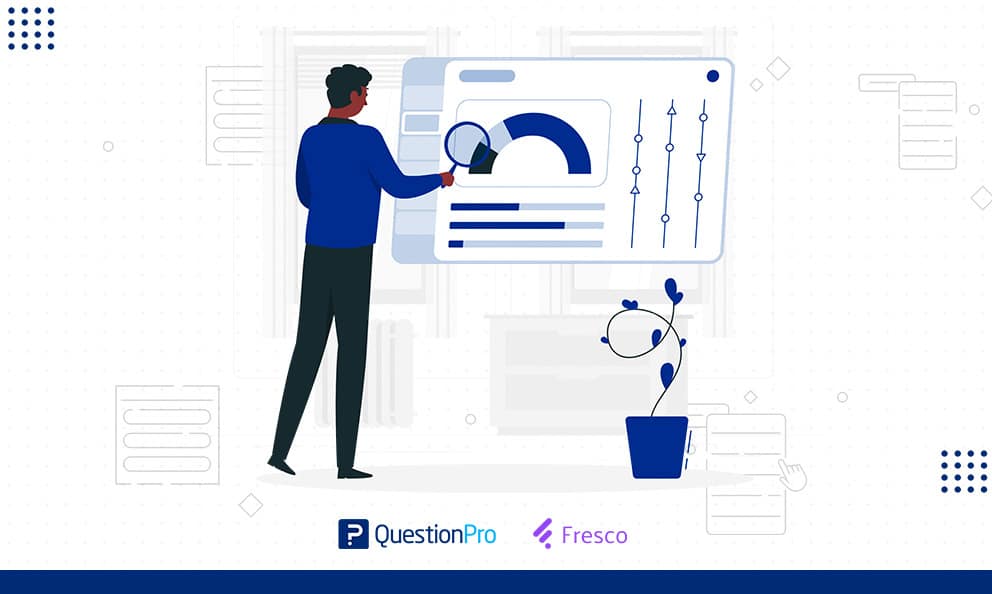 Reading Time: 3 minutes read
Reading Time: 3 minutes read
Data visualization has become an increasingly popular way to analyze trends and find patterns that are actionable and grounded in actual data. Doing so would traditionally require a ton of explanation and additional work, but visualizing complex data can make the insights within accessible to anyone. Let’s talk about Data Visualization for CX.
Because of this, data visualization has emerged as an efficient way to inspect and audit customer experience flows. While data visualization can be useful in many different fields, here are some of the reasons it can help improve your customer experience.
Data Visualization for CX can help tell compelling stories
One of the biggest problems with raw data is that it needs to be translated before it can be interpreted. This makes interpreting the story behind the numbers incredibly difficult. If you are a data scientist or have a very keen eye, you’ll be able to spot patterns in a raw data set; otherwise, you’re out of luck.
Data visualization helps alleviate this difficulty by organizing information in a way that creates a narrative around the customer journey and how their experience can be improved.
DV gives customer-related data new importance because it isn’t only about analysis and optimization but the user’s journey through the product. For this reason, it becomes much easier and more applicable to include data when presenting the customer experience.
Whether you’re pitching new changes, highlighting specific issues, or creating the value proposition for your brand, correctly positioning your customer’s experience is key, and data visualization is essential to that process.
Additionally, data can be easily inserted into a customer journey map to help tell their story and find places where their expectations aren’t being met.
Data Visualization for CX helps measure success and progress
It’s easy to look at a successful outcome of customer experience changes when a single person says their experience improved. When you implement changes on a larger scale, however, it becomes harder to understand.
Data visualization helps define specific metrics that, in your team’s eyes, underline what success and progress look like for your customer experience. Pulling these metrics from a large data set can be daunting, but doing so from an organized number of graphs and charts makes the process much easier. Additionally, it becomes less likely that your team will get caught up in useless metrics that don’t move your strategy forward because you will focus on the data and metrics most important to your specific goals.
It can help connect experiences
Similar to the last point, data visualization can help showcase the underlying truths behind a set of data. In this case, it can help connect feelings and experiences, so you have a better understanding of the root of the customer’s issue.
By comparing different data sets, you can look at how the customer’s experience changes between tasks, over time, or when their goals are different. Very rarely is the experience of a customer siloed to a single place. It usually flows between touchpoints and involves many different channels.
The intersectionality of a customer’s experience is a crucial factor to consider when developing a holistic CX strategy. You must address the connections between related experiences to create a truly all-encompassing CX strategy.
If you’re struggling to find the root of the issue plaguing your customers, try using a Fishbone Diagram to get to the bottom of things.
It can help communicate information between parties
While CX data can be messy and confusing at times, creating visualization pieces can help communicate this data to interested parties and expand the reach of your data.
It’s essential when creating a new CX strategy that everyone is on the same page and is working with the same set of information & assumptions. This won’t be the case unless they all have a nuanced understanding of the data you’re using. Utilizing data visualization techniques can help ensure your entire team understand and applies the data correctly to ensure your results are accurate.
Additionally, when you make data more approachable, you increase the pool of people that can collaborate on your project. Finding new voices and inserting new perspectives into your collaborative process is a great way to discover new ideas; data visualization helps make this possible.
Data Visualization for CX can help reveal unknown patterns or issues
Collecting customer feedback is crucial to improving their experience, but it can sometimes miss out on important underlying issues the user is experiencing. Collecting and visualizing data helps uncover experiential potholes that you might not even realize exist but are harming your overall customer experience.
This is because people are much better at spotting patterns or irregularities when they occur in a picture rather than a set of numbers or words. Allowing people to create visual associations with the presented data makes you more likely to discover new and important issues.
Data visualization is important to any field but can be especially impactful when used correctly in your customer experience process.




















